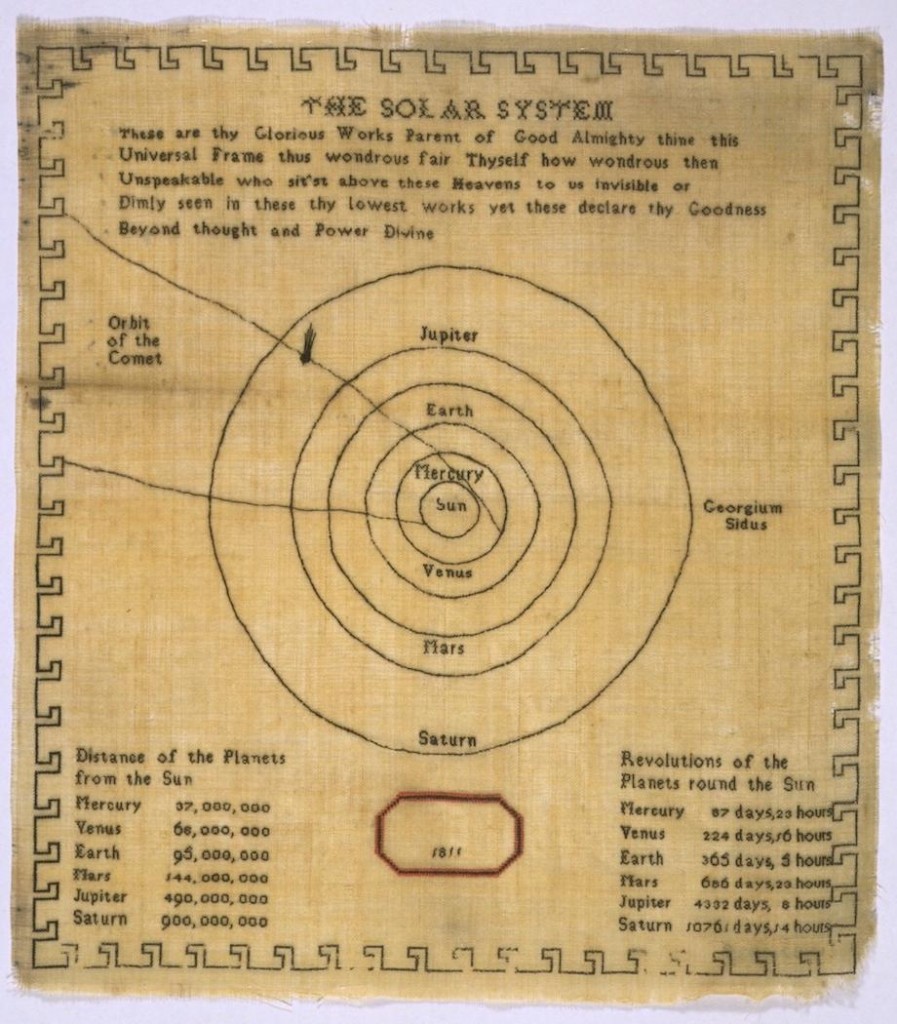Artist Makes Pixelated Photos by Stitching ‘Pixels’ on Them

From laughingsquid.com: Artist Diane Meyer adds pixelated sections to her photographs by embroidering pixel-like squares directly on to the photos with a needle and thread. The embroidered areas obscure the underlying photo, much like digital pixelation is used to obscure portions of a photo or video. She has used the technique on photos from her […]
Stitching the Solar System: Science as Needlepoint, 1811

From The Vault, Slate.com’s history blog: In the 17th, 18th, and 19th centuries, girls in the UK and the US used needle and thread to embroider images and text onto pieces of fabric that were called “samplers.” Samplers, which could be quite intricate, were meant to promote basic literacy and to teach patience and carefulness. […]